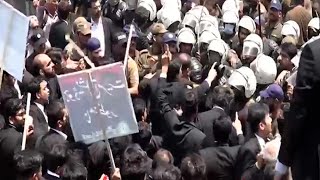KE (K-Electric) has submitted a petition to Nepra (National Electric Power Regulatory Authority) for getting a separate generation tariff. NEPRA recently did its public hearing on the subject. NEPRA will evaluate the petition and announce its judgment in due course. Although, there isn’t much time left as the current tariff system expires on the coming 30th June.
Presently, KE works under an integrated MYT (Multi-year Tariff) system that covers generation, transmission and distribution, all in one number and is awarded for 7-10 years. MYT was awarded in the context of privatisation in 2002-2005. The system was an anomaly having created an isolated island different from elsewhere in the country, which created many problems.
Why did the IFIs which led the privatisation support this kind of system? Probably, they thought that Karachi being an industrial city and it was in a better electricity supply situation, they thought that a privatised company under an integrated system may produce better results.
KE has had a mixed story of achievements. It makes a claim that it reduced T&D losses from 40 percent to 15 percent. The opponents claim that 40 percent losses were due to a peculiar political situation and extraordinary losses level reduction is at least partly due to improvement in political situation in Karachi.
Secondly, the current loss level of KE is higher than of many companies in NTDC (National Transmission and Dispatch Company) system, i.e., IESCO, FESCO, GEPCO, etc. However, it would be unfair to negate many efficiency improvements in the distribution system undertaken by KE; details of which may not be discussed due to the paucity of space. KE might have done still better had it not been beset with the ownership issues.
Perhaps a larger issue is the problems of electricity shortage in Karachi due to low and delayed investments. Current KE management and ownership issues have caused further pessimism in this respect. There have been voices of undoing privatization that may have caused more legal issues. Selling of shares to wealthy buyers has also been stuck to many issues.
Fortunately, KE has itself realized that a change in system is due. Many of us have been arguing for this for a long time now. KE cannot, in the circumstances of risk and CTBCM (competitive trading bilateral contract market) uncertainties, finance the required investments. Under the current system, Karachi and KE do not benefit from the national investments in power generation system, although the NTDC system has been supplying KE with 500-1500MW.
Secondly, KE is forced to operate its lesser efficient and expensive to operate plants due to its isolated or independent system, while more efficient plants in the national NTDC remain unutilised.
In these circumstances, of more practical solution is to undo the MYT system and replace it with the system that prevails countrywide in which generation is under independent IPPs (Independent Power Producers) with an established tariff system, transmission under NTDC system which has a separate tariff system and distribution as Discos operate.
KE has submitted generation tariff for all its operating plants individually and has proposed capacity charges and Operating charges. While, operating charges would not cause any difficulty, as it is being done already. However, fixing generation charges may be an issue that may have to be done by Nepra. In this situation, power plants would become IPPs as other IPPs.
KE can continue to make generation investments as any other IPP. There would be freedom for other investors to enter into KE area. KE monopoly has already gone away under the privatization agreement. Some arrangement may have to be made for selling KE transmission assets to NTDC. KE’s proposal does not deal with the issue. But certainly, regulator will have to sort it out.
KE’s petition does not talk about what happens to distribution tariff. Apparently, KE intends to amalgamate transmission and distribution. Disco tariff methodology is simple and well established. However, the issue cannot be dealt with in isolation. Both generation and distribution tariff should be decided in one package. Nepra should ask for a petition in this respect as well.
There has to be an agreement with KE to register its generating facilities as an independent IPP. Perhaps, some time schedule may have to be agreed. And also a broader agreement that KE will function as a DISCO and eventually under CTBCM it will operate as a wire only under the framework that has already been established. We would like to add that creating more distribution companies in Karachi, as proposed or demanded by some, would be causing confusion only.
The opponents of the proposal may oppose due to the take-or-pay clause as proposed by KE. All generation facilities are working under take-or-pay. The existing multi-year tariff system includes take-or pay implicitly. The KE plants are depreciated and capacity charges as proposed are not high, e.g., in the range of Rs 4-5 per kWh.
This piece may not be taken as some kind of a cooperative support to KE position as this scribe has been arguing for this for a long time and has written in this space and elsewhere. Finally, due to circumstances that KE is in, it has understood the logic and benefit of joining the countrywide integrated system. It would benefit all; consumers, KE and GoP.
Concluding, KE proposal is in effect a proposal for integration with the country-wide system. It would solve many problems and add several benefits. It would attract IPP investment in Karachi, let Karachi benefit from power investments made elsewhere in Pakistan, reduce power tariff and help reduce some of the Sindh’s grievances which have recently emerged in the form of SEPRA (Sindh Electric Power Regulatory Authority) — a separate power regulating agency for Sindh.
Copyright Business Recorder, 2023
The writer is former Member Energy, Planning Commission and author of several books on the energy sector























Comments
Comments are closed.